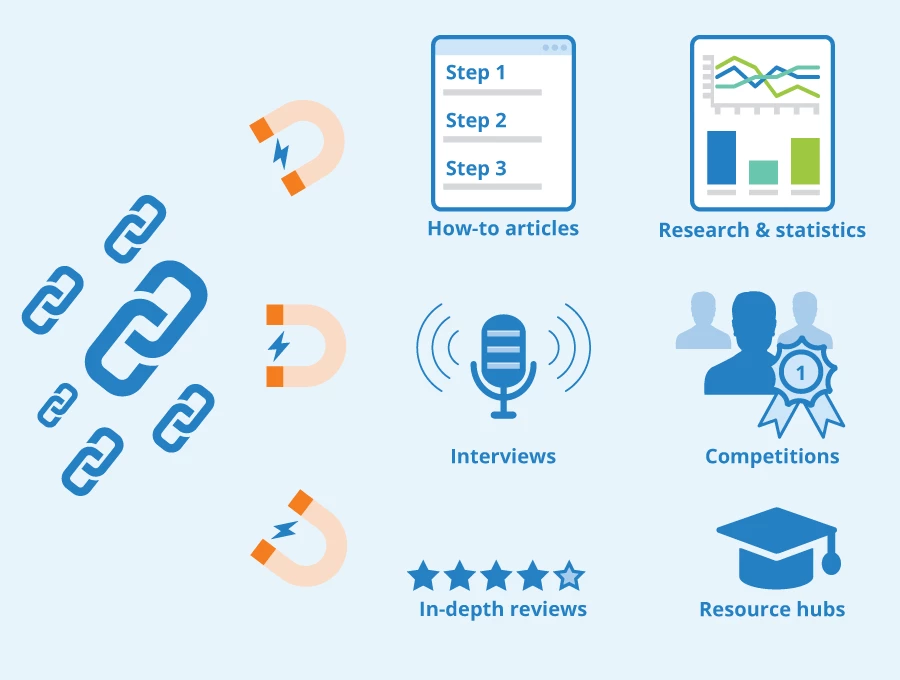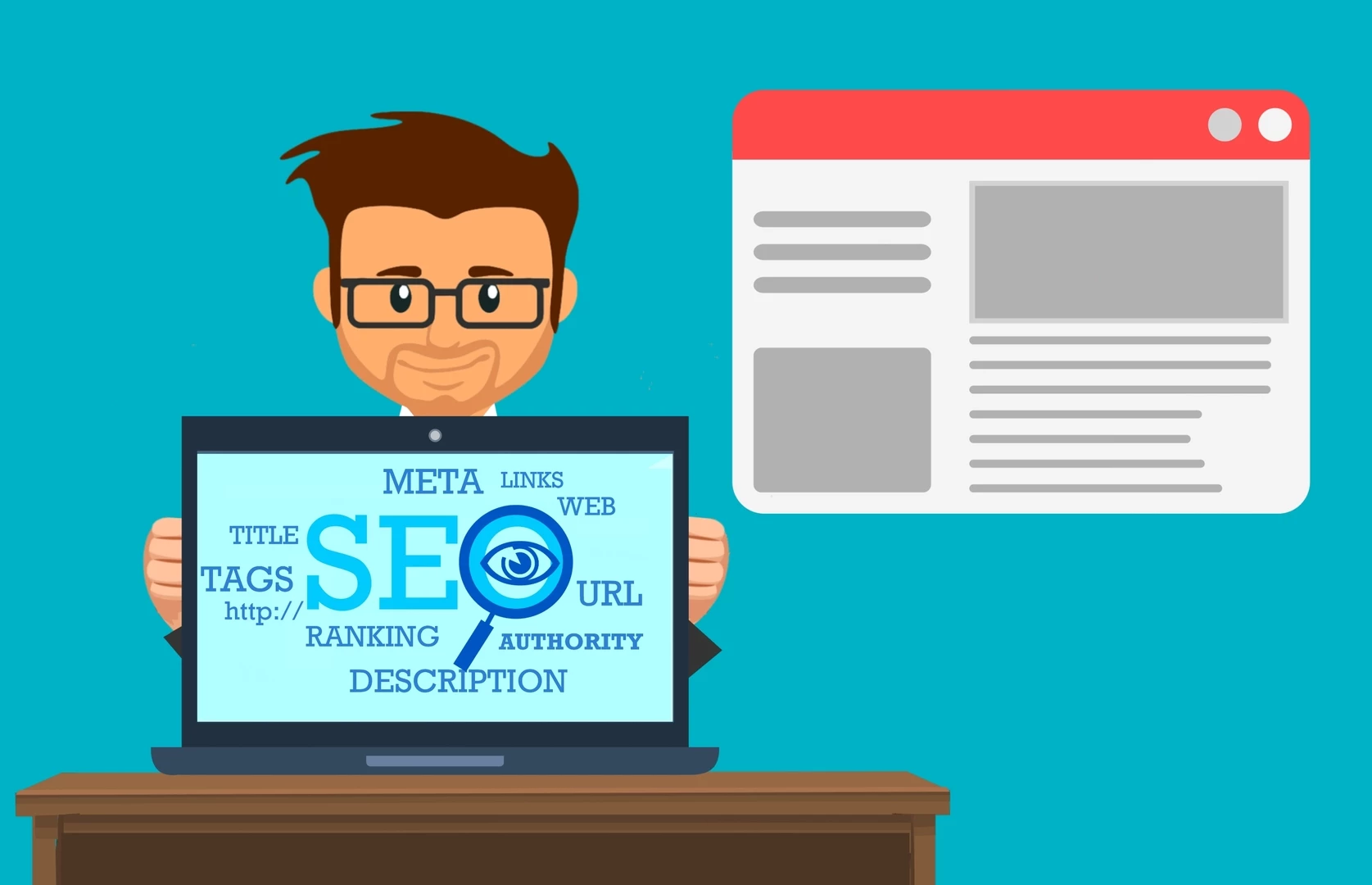Business
A Detailed Guide About Paraphrasing and Summarising You Must Know

Integrating a relevant piece of information into your scholarly writing is a challenging task. The two major ways of doing so are paraphrasing and summarising. Both these ways are different from each other and have different ways of incorporating information into the scholarly document. It is important to remember that all the sources that you use, either using a paraphrasing or summarising technique, should back up the main argument. They must not state an argument in themselves.
As you are here reading this post, it means you do not have an idea about paraphrasing and summarising. Also, you are here to learn how to paraphrase and summarise a piece of information correctly to incorporate it into your writing. Well, you have come to the right place. In today’s article, we will discuss both of these ways in detail. However, first of all, let’s define both of them.
What does it mean by paraphrasing?
The technique of paraphrasing involves taking a paragraph from the source paper and putting it into your scholarly text. The key thing here is that the paragraph taken is not placed as it is, but it is paraphrased. It means you have to grab the overall concept of the paragraph and write it in your own words and then incorporate it into your writing. The paraphrased paragraph is usually shorter in length than the original paragraph.
What does it mean by summarising?
Paraphrasing and summarising seem like same, but they are not. Summarising is more focused on the ideas and concepts discussed in the original paper instead of the words used. When summarising, you take a broader view of the original paper and present the main ideas in your own words. Summarising is not about discussing the original paper paragraph by paragraph. Instead, when summarising, you take the major sections of the source material into account and discuss their ideas in your document.
Steps involved in paraphrasing a source material
From the discussion above, you have got a good idea of what paraphrasing is. However, you still do not know how to paraphrase original writing or source material. Therefore, it is now time to discuss this and a brief description of the major steps involved is as follows:
- Read the paragraph. The first and most important step is to read the target paragraph that you want to paraphrase. Reading allows you to have a deeper understanding of the meaning of the paragraph, which is necessary for paraphrasing.
- Remove unnecessary text. A paraphrased paragraph is always shorter than the original one. Therefore, you must not aim for word-by-word changing. Instead, remove the unnecessary text, grab the overall idea, and start writing it in your own words.
- Use signal phrases. Signal phrases are used to distinguish between your material and the material that you have taken from another source. For example, “scientists believe that ..” Therefore, always use the signal phrase when paraphrasing.
- Retain key terms. There is no need to change the key terms of the paragraph. You must retain them as they are the essence of the whole paragraph. However, if you do not know how to paraphrase by retaining them, take some help from assignment writing services working online.
Key steps involved in summarising a source material
As discussed earlier, summarising is the second way to incorporate source material into your document. To summarise the source material effectively, there are some steps that you need to follow. A brief description of all those steps is as follows:
- Read the text. The first step is the same in paraphrasing and summarising. As the writer, you need to read the source material thoroughly and completely understand it. This extensive reading exposes you to the main ideas discussed in the source writing.
- Find the main ideas. The second step in summarising a text is to look for the main ideas present in it. The main ideas may be found in the abstract of the original paper or in the topic sentences of the paragraphs. Wherever they are, just find them.
- Note the main ideas. After their identification, you must note down the main ideas in your notebook. This will allow you to keep track of all the ideas found. Otherwise, you may forget some main and critical ideas discussed.
- Write the summary. Lastly, it is time to kick off the writing process of the summary. Start with the most critical idea discussed and keep on adding the ideas until they are finished. There is no need to make separate paragraphs for the summary. A summary itself is one to two paragraphs.
Conclusion
Paraphrasing and summarising are two widely used ways to incorporate a piece of information in a scholarly text. The former technique is based on the rewriting and rewording of the paragraphs. On the other hand, the latter is about the summarisation of the key ideas. The key steps discussed above will help you a lot in paraphrasing and summarising. So, read them carefully and perform these techniques accordingly.

Business
5 Success Stories from Leading Logistics Marketing Agencies

In today’s rapidly evolving marketplace, logistics marketing agencies play a crucial role in bridging the gap between supply chain efficiency and customer engagement. These specialized firms leverage a deep understanding of the logistics sector, utilizing innovative strategies to help companies maximize their reach and drive growth. Here, with the increasing complexity of global trade, the demand for adept marketing tailored specifically to the logistics industry has surged here today’s rapidly evolving marketplace, logistics marketing agencies play a crucial role in bridging the gap between supply chain efficiency and customer engagement. These specialized firms leverage a deep understanding of the logistics sector, utilizing innovative strategies to help companies maximize their reach and drive growth. Here, with the increasing complexity of global trade, the demand for adept marketing tailored specifically to the logistics industry has surged.
These agencies are not just about promoting services; they are data-driven, crafting campaigns that resonate with target audiences while enhancing brand visibility. From search engine optimization (SEO) to targeted digital advertising, they employ a range of techniques to ensure that logistics companies stand out in a crowded marketplace.
As we delve into the success stories of various logistics marketing agencies, we will uncover how they have transformed their clients’ operations, enhanced their online presence, and ultimately driven significant business outcomes. By showcasing these achievements, we aim to highlight the invaluable role logistics marketing agencies play in the modern business landscape, making them indispensable partners for companies striving to thrive in this competitive environment.
Importance of Marketing in the Logistics Industry
In the increasingly competitive logistics industry, effective marketing is not just a luxury — it’s a necessity. The nuances of this sector demand a strategic approach that combines traditional marketing techniques with advanced digital strategies. As logistics firms strive to differentiate themselves, marketing becomes the driving force behind brand recognition and customer loyalty.
One of the primary roles of marketing in logistics is to educate potential clients about the complexities and benefits of various services. With rapid technological advancements and shifting consumer expectations, agencies that effectively communicate their value propositions can capture market share and establish trust.
Moreover, targeted marketing campaigns help logistics companies to reach niche markets and tailor their offerings accordingly. By leveraging data analytics, agencies can identify customer pain points and provide solutions that resonate with specific audiences.
Finally, a strong marketing presence enhances a company’s reputation in an industry often plagued by misconceptions. By showcasing success stories and transparent operations, logistics firms can build credibility and foster long-term relationships. In essence, marketing is not merely an add-on; it’s the backbone of growth and sustainability in the logistics landscape.
Overview of Success Stories
In the ever-evolving landscape of logistics, marketing agencies have emerged as pivotal players, transforming how companies connect with their audiences. These success stories highlight innovative strategies that have led to remarkable growth and brand recognition, with the specific agencies involved remaining undisclosed due to NDA agreements.
One standout example involves a mid-sized freight company that, with the help of a specialized marketing agency, revamped its digital presence. By implementing a targeted SEO strategy and launching engaging content campaigns, they saw a 150% increase in organic traffic within six months.
Another success story features a logistics startup that harnessed the power of social media advertising. Through compelling visuals and customer testimonials crafted by their marketing partner, they not only amplified their brand visibility but also achieved a 300% increase in lead generation within a year.
Additionally, a renowned global shipping firm collaborated with a marketing agency to enhance customer engagement through personalized email campaigns. The result? An impressive 45% boost in customer retention rates.
These narratives illustrate the profound impact that strategic marketing initiatives can have on logistics businesses, driving growth, fostering innovation, and ultimately reshaping the industry landscape.
Case Study 1: Innovative Strategies from Agency A

Agency A has redefined success in the logistics marketing arena through a blend of innovative strategies that cater specifically to the unique challenges of the industry. One standout initiative involved a comprehensive digital transformation project for a mid-sized freight company struggling with visibility and market penetration.
Recognizing the importance of data-driven decisions, Agency A implemented advanced analytics tools to assess customer behavior and identify key pain points. This insight laid the groundwork for a targeted content marketing strategy that included informative blogs, engaging videos, and interactive webinars, tailored to educate potential clients on industry trends and best practices.
To complement this content strategy, Agency A leveraged social media platforms, creating a robust online presence that allowed the client to connect directly with their target audience. A series of compelling case studies showcasing successful logistics solutions further established the client as a thought leader in the space.
The results were impressive: within six months, website traffic surged by 150%, and lead generation doubled. Agency A’s innovative approach not only improved brand visibility but also fostered lasting relationships, proving that thoughtful marketing can transform logistics businesses in a competitive landscape.
Case Study 2: Transformative Campaigns by Agency B
Agency B, a trailblazer in logistics marketing, recently executed a transformative campaign for a mid-sized freight company struggling to stand out in a saturated market. The agency initiated a thorough market analysis, identifying key pain points within the target audience — specifically, the need for transparency and reliability during shipment processes.
With insights in hand, Agency B crafted a multi-platform strategy that prominently featured customer testimonials and real-time tracking features. They launched an engaging social media campaign showcasing behind-the-scenes operations, which humanized the brand and built trust with potential clients. The campaign’s centerpiece was an interactive website redesign that emphasized user experience, allowing clients to easily access shipment status and logistics updates.
The results were remarkable. Within six months, the freight company saw a 40% increase in website traffic and a 25% boost in lead generation. Most impressively, customer retention rates improved significantly, as clients felt more connected and informed throughout the shipping journey. Agency B’s innovative approach not only transformed the freight company’s brand image but also set a new standard for customer engagement in the logistics sector, demonstrating the power of targeted, transparent marketing.
Case Study 3: Data-Driven Success from Agency C
- Increased Website Traffic: A 150% surge in monthly visitors due to optimized SEO and strategic content marketing.
- Lead Generation: The campaign generated a 200% increase in qualified leads within just three months.
- Conversion Rates: The brokerage saw a 35% rise in conversion rates, directly linking data-driven personalization to successful customer engagement.
- Cost Efficiency: By reallocating budget to high-performing channels identified through analytics, the client reduced their customer acquisition cost by 25%.
- This case exemplifies how Agency C’s data-driven methodologies not only foster growth but also empower logistics companies to make informed decisions that drive long-term success.
Case Study 4: Creative Branding by Agency D
Agency D took a bold step in redefining its client’s brand identity, which was struggling to resonate in an increasingly competitive logistics market. The agency embarked on a comprehensive rebranding campaign that highlighted the company’s commitment to sustainability and innovation.
Through meticulous market research, Agency D discovered that their client’s target audience was particularly passionate about eco-friendly practices. Leveraging this insight, they crafted a striking new logo and a vibrant visual identity that incorporated green elements and modern typography. The campaign’s centerpiece was a digital storytelling initiative, showcasing the logistics company’s journey toward sustainability through engaging video content and infographics.
This multifaceted approach not only revamped the brand’s image but also created a community around its values. The result? A remarkable 40% increase in brand engagement on social media platforms and a 30% rise in customer inquiries within just six months. Agency D’s creative branding efforts not only repositioned the client as a leader in sustainable logistics but also fostered lasting connections with environmentally-conscious consumers. This case highlights how innovative branding can transform perceptions and drive tangible results in the logistics sector.
Case Study 5: Technology Integration by Agency E
In an era where technology dictates market dynamics, Agency E has revolutionized logistics marketing through strategic technology integration. By leveraging advanced analytics and AI-driven insights, Agency E transformed a traditional freight brokerage into a tech-savvy logistics powerhouse.
The agency embarked on a comprehensive data-driven campaign that incorporated machine learning algorithms to predict shipping trends and optimize routes. This not only enhanced operational efficiency but also significantly reduced costs for their clients. By integrating a user-friendly digital platform, they provided real-time tracking capabilities, allowing customers to monitor their shipments with unparalleled transparency.
Additionally, Agency E implemented a customer relationship management (CRM) system tailored to the logistics sector, enabling personalized communication and targeted marketing strategies. This integration led to a 40% increase in customer engagement and a dramatic rise in repeat business.
The success of this initiative is reflected in the agency’s remarkable 30% growth in revenue over just one year. By marrying logistics with cutting-edge technology, Agency E has set a benchmark for the industry, proving that innovation is key to thriving in a competitive landscape. Their story serves as an inspiration for other logistics marketing agencies looking to harness the power of technology for success.
Key Takeaways from the Success Stories

The success stories from leading logistics marketing agencies reveal several key takeaways that can inspire others in the industry. First and foremost, the importance of data-driven decision-making stands out. Agencies that leverage analytics to tailor their strategies consistently outperform those that rely on intuition alone. This data-centric approach not only enhances targeting but also improves ROI.
Additionally, effective storytelling plays a crucial role in connecting with clients. Agencies that have mastered the art of narrative can vividly convey their brand’s value proposition, fostering trust and engagement. This emotional connection often translates into long-term client relationships.
Moreover, the adaptability of these agencies in the face of market changes highlights the need for agility. Those that pivot quickly in response to evolving consumer demands or technological advancements are better positioned for sustained success.
Lastly, collaboration emerges as a vital theme. Successful agencies prioritize partnerships, whether with tech firms for innovative solutions or with clients to co-create marketing strategies. This collaborative spirit not only enriches campaigns but also ensures they resonate deeply with target audiences, securing loyalty in an increasingly competitive landscape.
Conclusion and Future Trends in Logistics Marketing
As we reflect on the remarkable success stories from leading logistics marketing agencies, it’s clear that innovation and adaptability have been the cornerstones of their achievements. These agencies have not only enhanced their clients’ visibility but also transformed traditional logistics marketing into a dynamic, data-driven endeavor.
Looking ahead, we can anticipate several key trends shaping the future of logistics marketing. First, the integration of artificial intelligence and machine learning will allow for hyper-personalized marketing strategies, enabling agencies to tailor campaigns that resonate deeply with target audiences. Additionally, the rise of sustainability in logistics will prompt marketers to emphasize eco-friendly practices, appealing to environmentally conscious consumers.
Furthermore, omnichannel marketing will become increasingly vital, as businesses strive to create seamless experiences across various platforms. This approach will require agencies to harness analytics to track customer interactions and preferences effectively.
Lastly, the growing significance of real-time tracking and transparency in logistics services will demand innovative storytelling techniques, allowing brands to showcase their efficiency and reliability. As these trends unfold, logistics marketing agencies are poised to lead the charge, driving growth and reinforcing the vital role of logistics in the global economy.
Business
A Guide to Customizing and Marketing Your Soap Boxes.

Do you have a soap box? Do you want to learn how to customize, market, and sell it? In this blog post, we will explore some of the best ways that you can do just that. We will discuss topics such as the benefits of customizing your custom soap boxes, marketing ideas for these items, and more.
First, let’s talk about the benefits of soap box customization.
Get Yourself Recognized with this Packaging
Customizing your soap packaging boxes isn’t only a great way to enhance their appearance and attractiveness; it also serves several other purposes as well. One is that customizations can help give you more brand recognition among customers at fairs or markets where these items are sold. For example, if you have an event coming up in which multiple vendors will be selling handmade soaps at stalls or tents on-site for attendees to purchase them, then having distinctive packaging like customized soap boxes may make all the difference between whether people notice your booth versus another’s when walking around the area during this gathering. Dream Tech News
Another benefit of customizing your product packaging is that doing so can allow buyers to get a better feel for what they can expect from your product, taste-wise or quality-wise. This may be particularly important if you are selling handmade soaps in which buyers have never try before because these items need to be try out first in order for people to know whether they will like it or not.
Creating distinctive packaging with customizations on them could give potential customers the confidence needed to purchase whatever item is inside of that soap box.
Marketing Tool that can Lead you Towards Success
Soap kraft boxes wholesale is used as a marketing tool to advertise products and services. They can be customize with logos, pictures, designs, or other creative images that people would like to represent their product or service. The benefit of using soap boxes is that they will bring more attention and awareness about its brand and products. This blog post includes some tips on how to customize your own soap box for maximum effectiveness.
Soap Boxes can be use for marketing campaigns. They are customizable with images, logos, and designs. The benefit of using soap boxes is that they will bring more attention to its brand and products. This blog post includes some tips on how to customize your soap box for maximum effectiveness.
This blog covers many topics related to customizing a Soap Box like what you need in order to do it successfully, examples of successful branding strategies which various companies have implemented throughout history, as well as providing information about other packaging materials such as jars, bags, etc., along with giving an insight into why these packaging options may not always be feasible or cost-effective depending on the product being sold within them.
The main idea here is that people are interest in what you have to offer, not the container it’s coming in. So if your soap box isn’t up to par with your product, then consumers won’t be purchasing from you because they don’t want a sub-par package when they can purchase something similar for less elsewhere.
Select Logo Placement Wisely
Common mistakes companies make having their logo place somewhere on the side of the soap where it will get lost among everything else going on there or not taking into account how much text should go onto each area of the packaging, which results in either too much information being cram into one spot resulting in overcrowding and other times just blank spots without any information leaving potential customers wondering what exactly this company does/sells etc.
The company should also put some thought into what type of design will work best for their product. It can be something that is very simple and classic looking, or it could show off the products with an artsy, modern look by using different fonts, colors, etc.
Another thing to consider when designing a soap box is whether you want your customers to shop base on the quality of your products or if you would rather have them turn towards buying from companies who are eco-friendly; either way, there needs to be something about this information display somewhere on the outside packaging, so potential customers know exactly what they’re purchasing.
Designing Soap Box
As far as marketing goes, most companies don’t really think much beyond just posting pictures online through social media outlets such as Facebook/ Instagram/Pinterest, etc. Still, there are some other great ways to market your business without having to spend a ton of money on it first; you want people to know who you are, what your brand is about, and how they can buy from you so social media platforms are definitely one way of doing this. Still, another great option that doesn’t cost anything at all is the word of mouth marketing.
If someone likes something they see online, whether it be an Instagram post or a Facebook ad, the best thing that companies can do for their customers is give them easy access through email or direct messaging. I don’t think many businesses realize how big of an impact this has when trying to gain more sales using tools like MailChimp & SendPulse have made things extremely simple for small businesses, so it’s definitely the way to go!
People have always said word of mouth is one of the best forms of marketing, and I think that’s because people are more willing to take advice from friends & family than a random company they don’t know.
Custom Care Services
So not only will your customers be happy, but you’ll get some amazing reviews out there. If someone has order something then had an issue with their purchase or lost interest in what was purchase. You should try whatever possible for them to contact customer service directly without having them leave social media platforms which could lead to loss of sales. If handled correctly, this can turn into nothing but great things, maybe even another sale or referral, etc.
If you want to increase your soap sales or a creative way to present your product, you should consider getting custom soap boxes. There are many different ways to do this, and the customization options are endless. Because there is no limit on what materials can be use.
Business
Stylish Rigid Packaging Boxes to Fit Every Sort of Products
Moreover, brands can print vital information and lively patterns in any color on wholesale rigid boxes.

Brands can get luxurious packaging for their products by using rigid packaging boxes. These are made of hard paper materials to offer maximum protection and firmness to the inside products. The solid surface of rigid packaging gives a professional feel to the products. Furthermore, these boxes are customizable per order. No matter if you want to package electronics, perfumes, cosmetics, apparel, ornaments, or any other expensive item, these packaging boxes are the perfect fit. One can choose from a variety of options, such as printing and embellishments like foil stamping, embossing, debossing, or coatings to increase the charm of packaging. Despite their rigid natures, they are still recyclable and add no packaging waste to the environment.
Creative Shapes Lure More Customers
A square or rectangular packaging box comes to mind when one thinks of custom rigid packaging. Brands usually get these shapes when putting together their product packaging. However, if you want to create more luxurious and innovative packaging for your brand, it is best to modify the shapes and sizes of rigid packaging boxes. Other than that, it is important to design packaging that helps distinguish your brand from the rivals roaming in the market. Some of the most popular packaging options include round boxes, hexagonal boxes, cylindrical boxes, pyramid boxes, and sleeve rigid packaging boxes.

Unique Window and Die-Cut Patterns
Window cuts on the rigid packaging boxes can give customers a sneak peek into the inside product via a transparent PVC sheet. Transparency introduces an innovative touch to the product display and encourages customers’ purchase decisions. Moreover, one can embellish window panes using ribbons or introduce a brand logo or name. Using the transparent PVC sheet, you can create different displays for different products. The adorable products will stand out more on store shelves and counters among rival products. The toys, apparel, as well as luxury cosmetics, look more valuable inside rigid packaging. Rigid window boxes ease customers in many ways. Take the example of ties, the customers can look through the window cuts and decide which tie they want without opening the packaging boxes. It will save you time and also prevent damage to products.
Custom Rigid Boxes with Inserts
Rigid packaging containing custom inserts is an effective way for a brand to secure its products. It also ensures that when the customers open the packaging, they will see everything in its proper and best form. Giving a luxurious touch to your brand’s display packaging using inserts make your brand stand out from the crowd. One can also print the inserts to enhance the outlook of the packaging. Additionally, you can also emboss or deboss your brand’s logo on the inserts to add a touch of branding. Retail stores as well as brand owners get Wholesale Rigid Boxes to package luxury products. Inserts will hold the products in place and popularize the brand. For example, one can place premium ornaments inside the inserts. Moreover, the royal fragrance also looks more valuable inside the insert of rigid packaging.
Magnetic Closure Design of Rigid Packaging
If you want extraordinarily luxurious packaging the custom rigid packaging with magnetic closure is here for you. The magnetic closures ensure that products remain safe in the packaging boxes during the shipment. The magnetic style provides extra protection to the product packaging boxes.

One can embellish this magnetic closure using some ribbon, thread, or button. It not only looks adorable but also is easy to use. As a result, the customers will enjoy mesmerizing unboxing experience. Such kinds of wholesale rigid boxes come in drawer-style boxes, flap boxes, or other boxes of such sorts.
Prints That Advertise Your Brand
Marketing the brand is a crucial step that requires a lot of consideration to overcome all the hurdles on the way. After manufacturing high-end products, you should never package them in dull and ordinary packaging boxes. The printed rigid packaging not only enhances products’ worth but also promotes your brand if you print the brand label on it.
Read More: What Are The Best Benefits Of Filing Cabinets?
One can get these boxes in white, black, or any other color per preference. The colors of wholesale rigid boxes will tell the brand’s story and advertise it. One can print the brand logo in the middle or side of the rigid product boxes using embossing, debossing, coloring, or foiling techniques. These techniques are also helpful in making rigid gift boxes to package presents.
Colorful Rigid Packaging Boxes
Strong layers with amazingly vibrant colors are the perks of custom rigid packaging boxes. These boxes appear similar to cardboard product boxes when we talk about their quality. They are also easy to color per your orders using CMYK and PMS color models. On top of that, one can apply matte, glossy, or UV spot coating on the rigid packaging.
The polishing of these boxes gives a more premium and professional outlook to the packaging. Moreover, brands can print vital information and lively patterns in any color on wholesale rigid boxes. Due to these benefits, these boxes are more attractive and professional than other types of packaging boxes especially when it comes to the packaging of expensive products. Additionally, the coating finishes of these boxes make them more exclusive and eye-captivating to attract more customers.

 Travel2 years ago
Travel2 years agoPractical And Essential Car Interior Accessories To Add Comfort And Convenience To Your Drive

 Business2 years ago
Business2 years agoTop Reasons Why you Need to Consider Outsourcing Real Estate Photo Editing

 Business2 years ago
Business2 years agoDead And Co Setlist What They Played At The Gorge Amphitheatre

 Health2 years ago
Health2 years agoGarlic Is The Best Vegetable To Treat Heart Problems

 Featured2 years ago
Featured2 years agoHow to Make a Sports Career in India

 Sports2 years ago
Sports2 years agoHow to watch the ETSU game -What are the benefits of watching the ETSU game?

 Health2 years ago
Health2 years ago5 Reasons to Choose Turkey for Dental Treatments

 Travel2 years ago
Travel2 years agoSpectacular Hot Air Balloon Rides in Goa